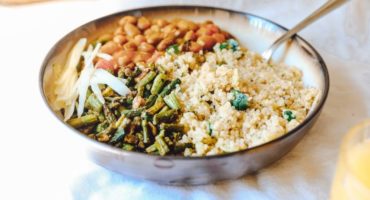

Nutritional science has proven over and over again, however, that natural ingredients are much healthier for our bodies than any kind of processed gunk. Plant-based wellness is all about harnessing the power of natural ingredients, not just as food but also medicine. In recent years more and more people are enjoying the benefits of age-old herbal remedies rather than popping a pharmaceutical pill at the first sign of stress or fatigue.
Here are my current three favourites:
This potent plant-based beauty is known as the “Prince of Herbs” because of its ability to help our bodies to fight off stress, not to mention its aphrodisiac properties. It is as old as Ayurveda - one of the world’s oldest holistic healing systems developed in India more than 3,000 years ago. Ashwagandha is an adaptogen (a kind of herbal medicine) that nourishes the nervous system and restores overall health. It does this by helping to normalise the body’s response by modelling the release of stress hormones like cortisol from the adrenal glands, thus raising what is low (energy, memory capacity, mood) and decreasing what is high (stress). It can be taken in concentrated powder form, at least 3-5g daily added to milk, coffee, tea or a smoothie.
This spice packs a serious wellness punch! Turmeric’s long history of medical use, dating back nearly 4,000 years to the Vedic culture in India, is thanks to the root, which contains the yellow-coloured chemical known as curcumin – that’s the bit that is widely used to make medicine. And no wonder, really: turmeric is an antioxidant, which can help boost immunity and to fight off illness or inflammation. It can be a bit tricky to absorb though, so I suggest to take it with piperine, found in black pepper, which helps the body soak it up. It is also fat-soluble and so best consumed with milk, nutmilk or coconut oil.
Cannabidiol (a.k.a. CBD) refers to just one of over 100 cannabinoids derived from the hemp plant and is similar to cannabis in that it aids pain relief. The relationship stops there, however, since CBD will not get you high and is 100% legal to consume in both the UK and most European countries. The body has a natural system filled with receptors that interact with cannabinoids. CBD entices the body to create its own endogenous cannabinoids, which create a positive effect on the body’s pain and inflammation responses. CBD can be ingested in an oil called a tincture, applied topically on the skin or vaped / inhaled.

Are you being fooled by health labels?
Do you have to wear lycra to do yoga?
No you don’t. But as your body is moving through the various planes of motion, it’s easy to get lost in your clothes! So wear comfortable, form-fitting kit that doesn’t interrupt your yoga flow.
How can I do yoga if I’m not flexible?
Well, that’s the reason to do yoga, not to not do yoga! It doesn’t matter if you can’t touch your toes. Flexibility is not a prerequisite to do yoga. But the willingness to try something new is.




